This is the 8th installment of our Zimbabwe safari diary and follows on from – Game Driving in Hwange National Park
23 September 2014
Our last morning at Bomani.
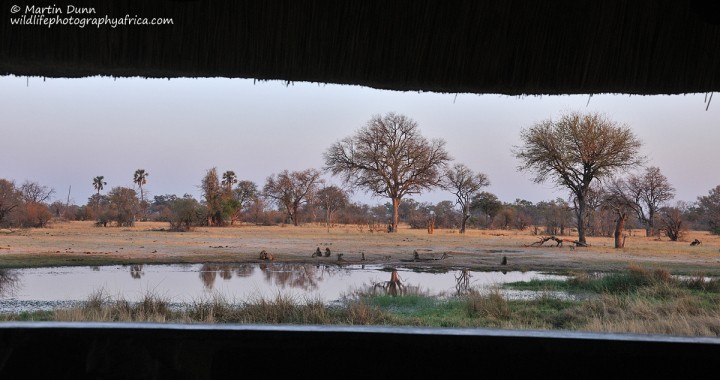
On our way to the gate we spot a pair of Yellow Billed Kites in a tree above us, they’ve got some fresh meat. No idea what it might be though.
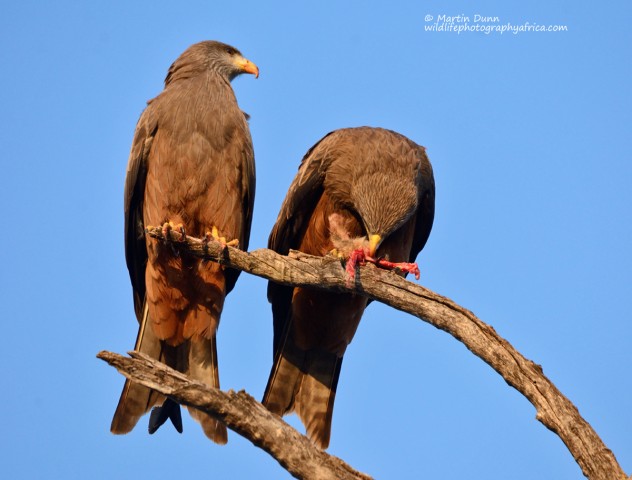
The buffalo herd from yesterday were just inside the gate, munching their way through the forest.
Out on the plains we tried to get close to a couple of eland bulls but they were way to wary and just kept moving away, then I spotted something moving on the edge of the treeline. It was a cheetah.
Cheetahs
On the one hand this was great, we all wanted to see cheetah. But, if it was the same cheetahs we had seen 2 days earlier, and they were still in essentially the same place, this was not good news. It almost certainly meant that the injured cheetah was not keen to do much walking. It was the same 2 males we had seen previously.
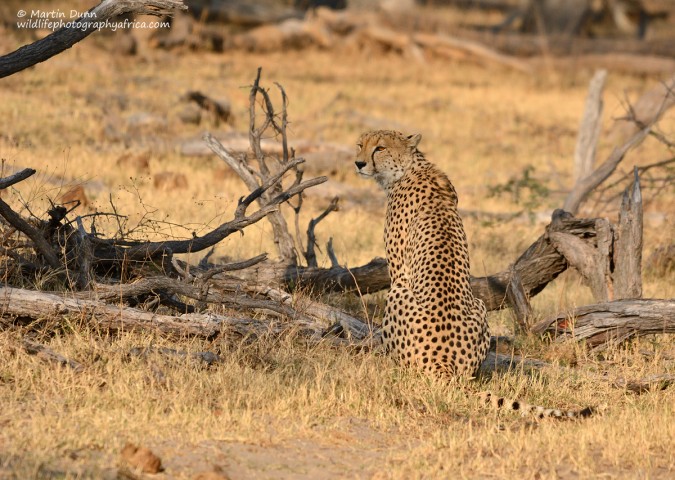
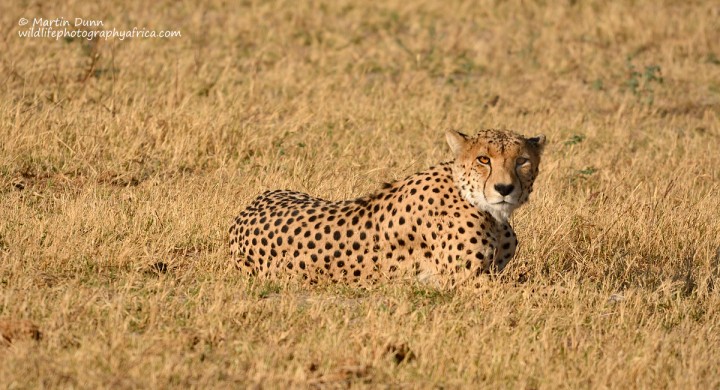
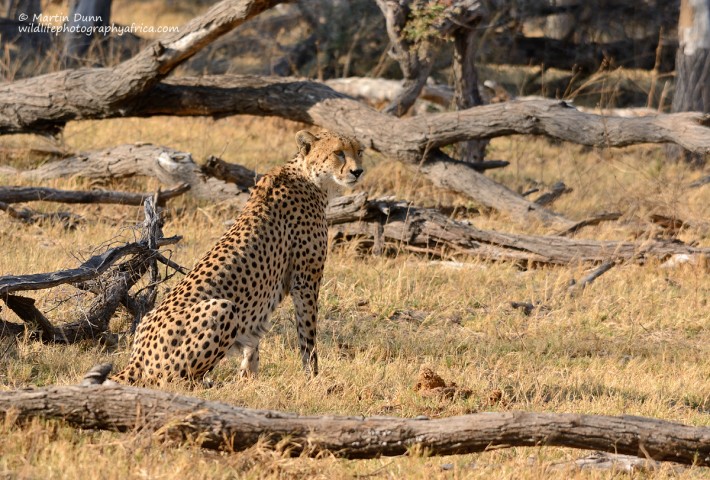
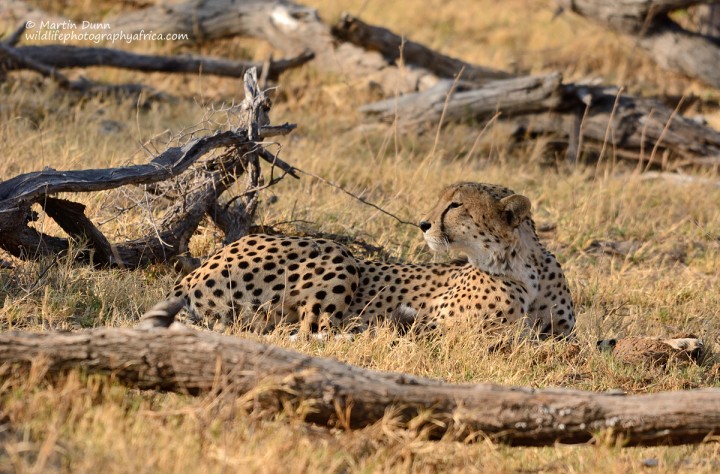
We watched them for a while and when one of them got up to change his position we could see that he was still limping badly. It was distressing to see an animal so dependant on being able to run barely able to walk.
At one point, while we were watching a silver backed jackal strolled past behind the injured cheetah.
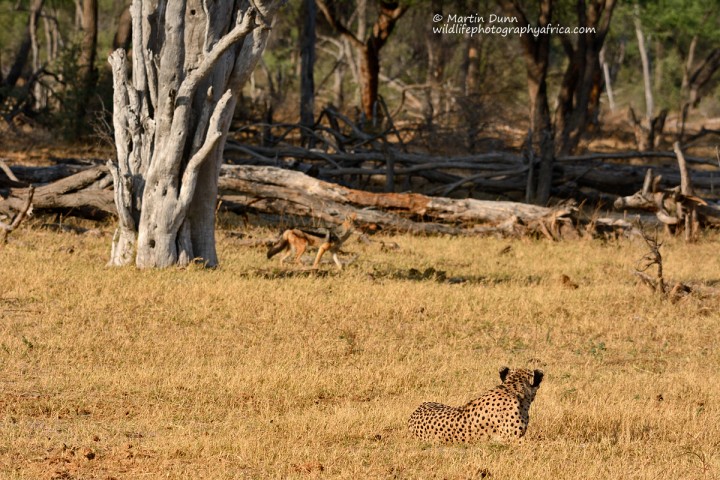
Great News!
I have been in touch with Imvelo Safari Lodges since my return and I am delighted to report that although no-one saw him for a couple of weeks and feared the worst, the injured cheetah has now returned and is hunting again. He seems to be fully recovered.I’m much happier now. I can look at my photos without having to wonder if he is even alive.
Leaving the cheetahs we went back to the nest where the Giant Eagle Owl (Verreaux’s Eagle Owl) had its nest. With the sun in a much better position we could see the distinctive profile of the mother on the nest. The chick however stayed well hidden. Now that we were in position and ready, we wanted the mother to fly off, but of course she had other ideas and stayed on the nest.
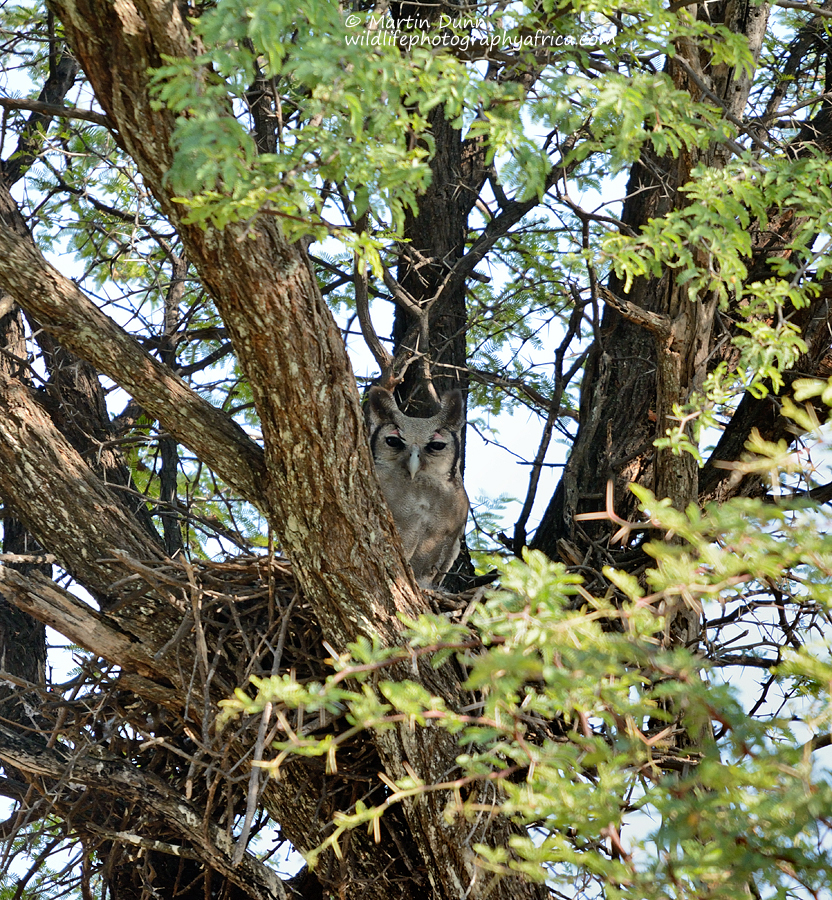
The wind had picked up again and this Lilac Breasted Roller was having a bit of a battle to stay on its perch
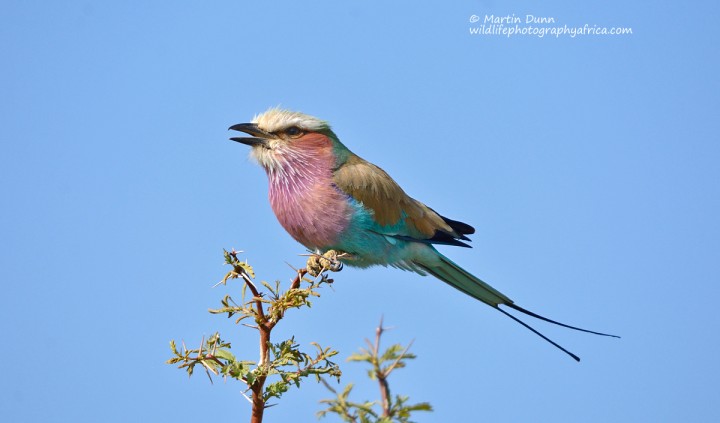
Meandering slowly in the direction of camp we circled by the various waterholes where we’d seen game on previous drives. We planned to get out for our morning coffee near the pan where the Lookup was situated but as we approached we saw that there were lots of vultures circling and coming in to land. We could see several of them on the ground on the opposite side of the water from the hide on what looked like a buffalo carcass. Ooh goody!
A sky full of Vultures
Even in the few minutes it took us to get around the pan the number of vultures had increased significantly and they were jumping around and squabbling over the carcass.
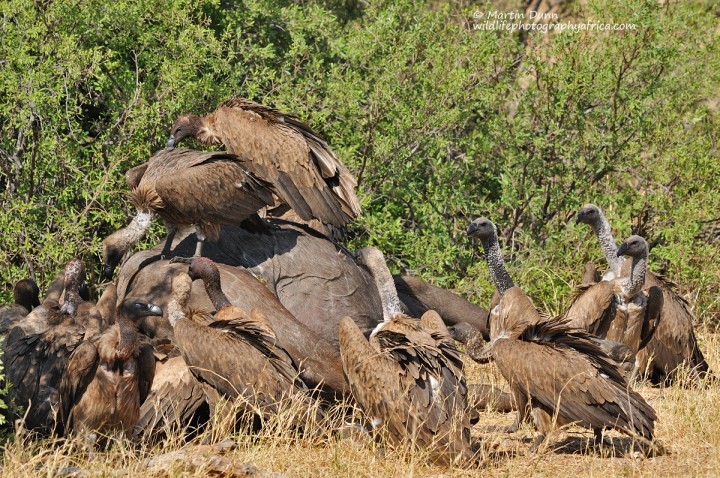
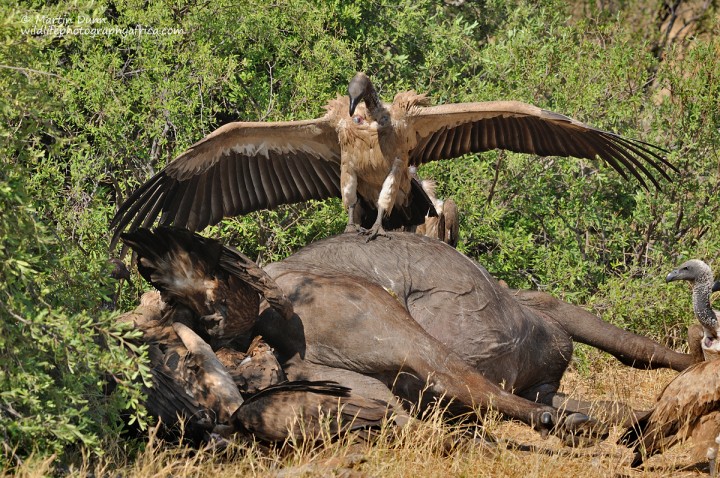
It was a buffalo but rather than being killed by lions it appeared to have just died. And that was what was causing the vultures so much angst. So far all the vultures that had arrived were White Backed Vultures and their beaks were not sharp enough/strong enough to pierce the hide. So they all jostled for position while they waited for something to come along that could rip the carcass open. What they needed was either a few of the much larger Lappet Faced Vultures, a hyaena or even a lion.
We positioned ourselves with a good view and sat back to watch and wait. The sky was full of circling vultures with more and more of them coming in to land.
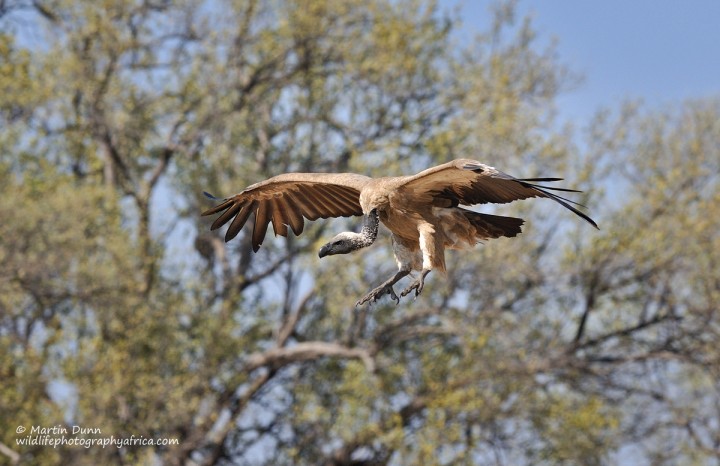
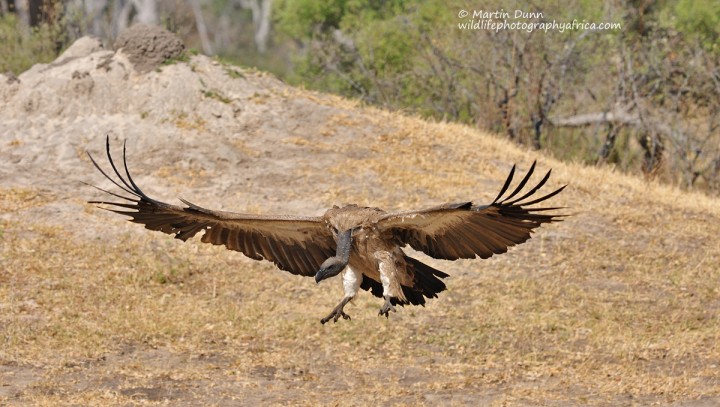
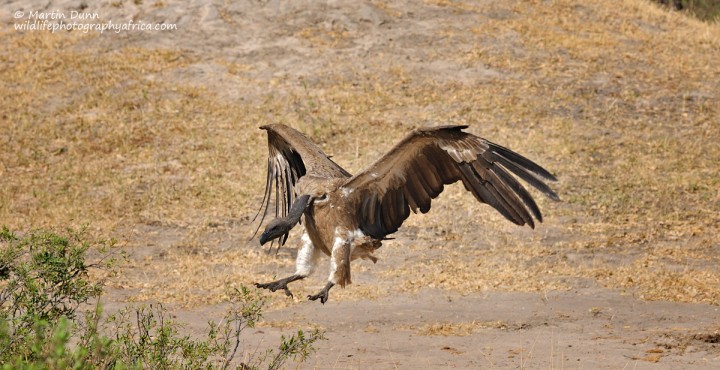
Those that had been there a while started to get bored and fly off or move to the pan itself to wash.
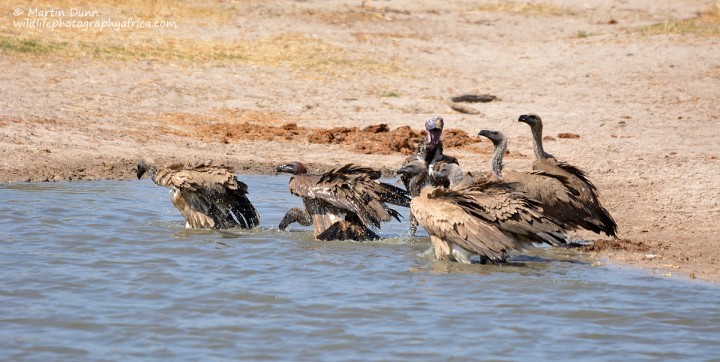
This was something I had not really had a chance to watch before, but the vultures took a lot of care cleaning themselves.
Eventually e spotted the distinctive silhouette of a Lappet Faced Vulture coming in to land.
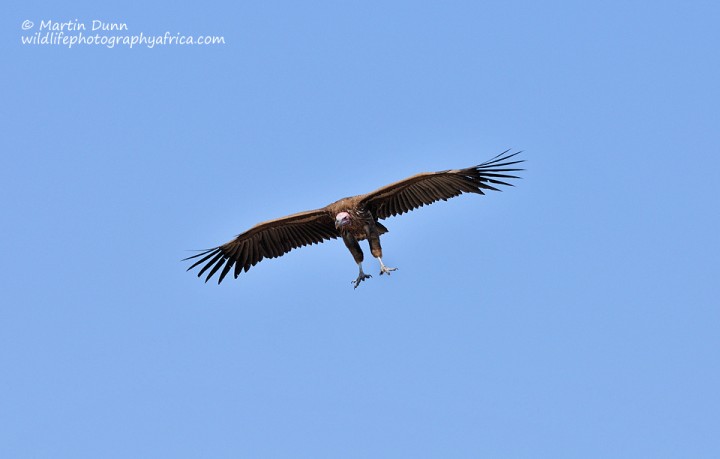
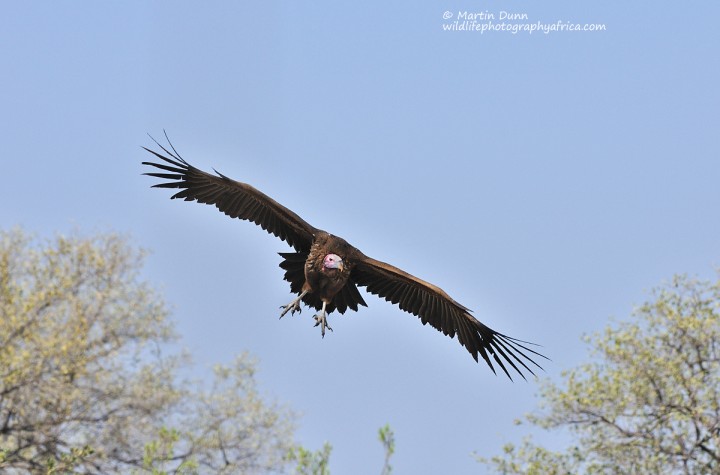
It was shortly followed by another, but instead of pushing their way to the front they just sat back and waited, seemingly intimidated by the much more numerous White Backed Vultures.
I found it quite surprising that although they were much larger than the White Backed Vultures and had the necessary equipment to open the buffalo up so they could all feed, they held back. I would have expected that all the vultures would have understood what was needed and ensured that the Lappet Faced Vultures were encouraged to get ripping.
In the distance we could see the buffalo herd waiting to approach the waterhole.
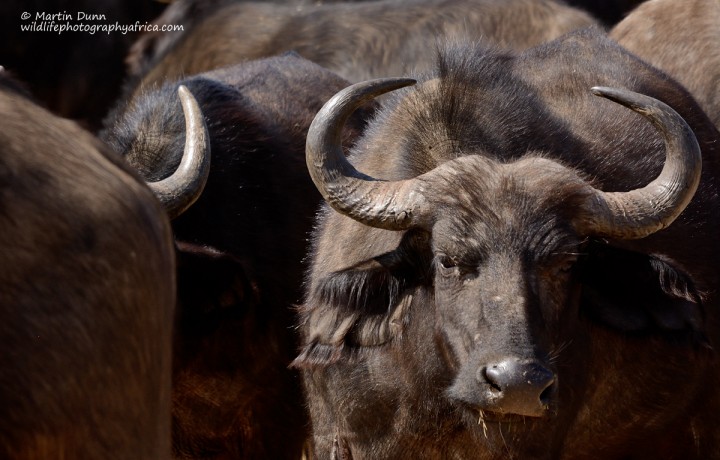
As before, they were in no hurry and although we waited about half an hour the buffalo came no closer to the water and the vultures came no closer to opening the carcass.
Eventually the lure of brunch was too much and we left the vultures to sort it our amongst themselves.
Not enough seats
One of the great things about Bomani is that their airstrip is only about 300 metres from the camp. It means that we can wait until we hear the aircraft overhead before we need to load our bags into the Land Rover and drive over there.
At un-manned airstrips like Bomani is that someone from the camp is supposed to drive out there before the flight lands and act as fire marshall. No sooner had we heard the sound of the incoming aircraft than a Land Rover went haring out of camp. By the time we get there the aircraft is already on the ground. And the pilot is giving instructions for the loading of our bags.
I stroll over to inspect the plane, a Cessna V206. I notice straight away that it is a 6 seater – that is 6 seats including the pilot! There are 6 of us and we have luggage.
The pilot watches with a smile as I stroll back to where Pat is standing. “This could be interesting” I say. Pat hates light aircraft flights anyway
A couple of the others now inspect the Cessna and I can see from their faces that they too are wondering how we will all fit in.
The pilot strolls over “Been doing a seat count?” he asks with a grin.
When we answer in the affirmative he laughs and tells us not to worry as a second plane is on its way. It arrives a few minutes later.
Once the bags and the bodies have been apportioned to the 2 aircraft the planes manoeuvre for take off.
I’m in the second plane. Once the first one starts revving its engine our pilot closes the windows to keep out the dust storm that is being thrown up. It starts to get very warm in the small cabin and we urge the other plane to get on with it.
I had hoped that we would get some good views of the country as we flew up to Lake Kariba but the air is so thick with haze and smoke that visibility is terrible.
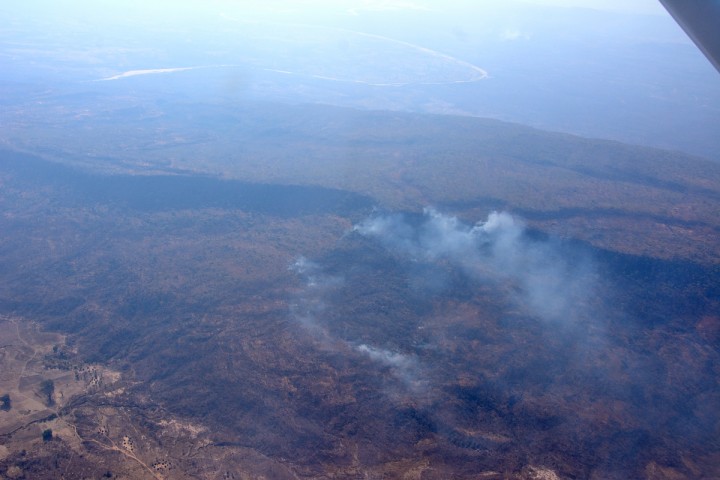
The pilot said that it was causing problems for them too with huge amounts of muck sticking to the wings and visibility sometimes so bad he couldn’t see the airstrip he was supposed to be landing on from as close as 2km away.
You can continue following our Safari Diary by clicking here for the 9th installment – Matusadona, a birding paradise on the shores of Lake Kariba

